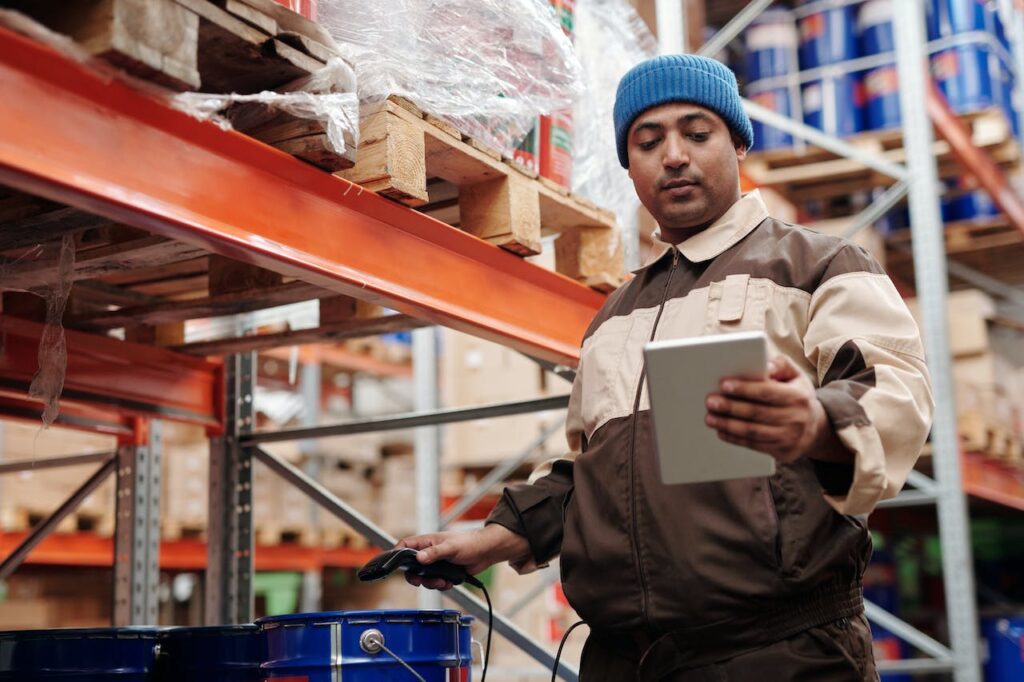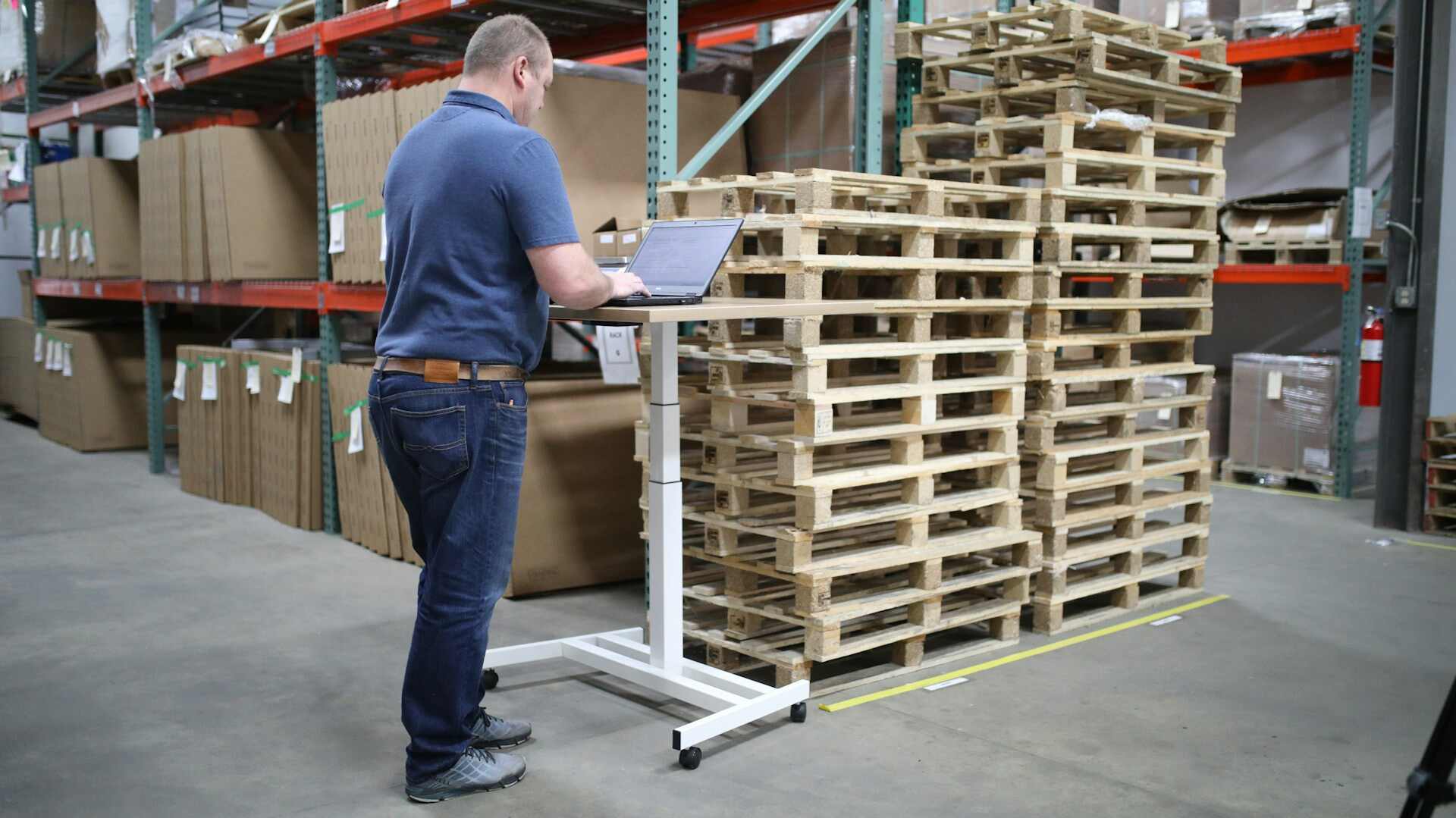If you were to ask the average person about the tools needed to run a warehouse, you would likely hear mentions of forklifts, conveyor belts, and pallet jacks.
While these devices certainly play a vital role in ensuring goods move in and out of warehouses, they only cover one side of logistics management. Recent innovations in modern warehouse technology have transformed the work of facility operators and employees, leading to more cost-effective and predictable delivery times.
Below are a few noteworthy innovations in warehouse management technology.
1. Automated Picking
Until recently, picking was an error-prone and labor-intensive process.
An employee of the warehouse facility would read a packing slip based on a customer’s order. Each slip contained the items included in the order along with the quantity of each item. They would then locate the shelf storing the goods, pick them up, and transport them to a designated packing area.
But people make mistakes. In fact, the industry average picking error rate is between 1 percent and 3 percent, with the average cost per error ranging between $50 and $300. At the same time, picking consumes nearly 55 percent of a warehouse’s operating expenses. A process as costly and ripe for mistakes as picking is a prime candidate for automation through warehousing technology.
Administered using warehouse management system technology, automated picking solutions either supplement the work of human employees or automate the process entirely. For example, pick-to-light devices use a system of bins and lights. When a light goes on over a bin, an employee removes the item and places it on a conveyor belt. Other warehouses use robotic arms to eliminate human involvement in order picking.
2. Inventory Tracking with Radio Frequency Devices

Warehouse facilities contain thousands of items. Inevitably, some items become lost or misplaced.
Radio frequency identification (RFID) inventory tracking is an innovation in warehouse management technology that’s solving this industry pain point one tag at a time. RFID tags are placed on every device that arrives at a facility. These tags offer second-by-second insight into a warehouse’s inventory, including:
- Real-time quantities for every item in stock
- The location of every item
- SKU numbers
With all of this information in one place, operators can reduce the quantity of lost products, fulfill orders faster, and achieve greater visibility into their inventory levels.
3. Internet of Things (IoT)
These days, everything seems to be connected to the Internet. Modern warehouse technology is no exception.
At a moment’s notice, facility operators can access a range of data points about internal conditions, including temperature, moisture levels, and more using data from smart sensors located throughout the warehouse. Managers and operators can use this modern warehouse management system to lower temperatures or determine if they need to contact a technician. But this technology extends beyond simply monitoring and adjusting the facility’s climate.
Many facilities now have sensors that can track items as they move from one part of the facility to another. Other sensors detect inventory levels on shelves to allow for real-time monitoring of inventory levels. Some are even capable of communicating when maintenance on equipment is required. All of this data can be used to create more predictable and efficient workflows throughout the facility.
Warehouse management technology is streaming facility operations while providing managers with the insight they need to make critical decisions.
4. Process Simulations
Warehouses are process-driven facilities. Administrators are constantly searching for ways to reduce costs by streamlining these processes. But, it’s not easy.
Even small tweaks to existing processes can have cascading effects if any one of many variables are left unaccounted for. Managers need a way to measure the impact of potential changes to existing processes while also being able to anticipate any unintended consequences of implementing them. Warehouse management technology makes it possible.
Many management systems now leverage data collected from smart sensors placed throughout the warehouse to create real-time models of the facility. Administrators can use these models to assess inventory levels, visualize warehouse operations, and even test out changes to workflows.
5. Electronic Data Interchange (EDI)
In the modern business world, millions of transactions occur every day. Thankfully, warehouse management technology has made strides to maintain pace with the needs of modern businesses. Whenever a transaction occurs, EDI documents are automatically transmitted to warehouse facilities. At the same time, warehouses receive documents from their suppliers so they know when shipments are scheduled to take place.
This exchange of data enabled by warehousing technology not only eliminates human error associated with manual data entry, but also offers streamlined order processing, increased visibility into a company’s supply chain, and cost savings.
6. 3D Bin Packing
Once an item is picked from a warehouse shelf, it needs to be packed. If you’ve ever tried packing a box, you understand how challenging this can be.
Trying to decide how large of a box is needed to fit everything is rarely a simple task, especially when you need to account for packing material, weight restrictions, and shipping fees. Warehouse management providers have worked to reduce the guesswork typically involved in this process through new advances in technology.
3D bin packing technology automatically weighs and measures items set for shipment, then uses this data to generate a packing plan and a visual design that the order packer can reference as they place items in the box. It can even tape and apply labels to boxes. This kind of warehousing technology is designed to reduce human error while maximizing efficiency.
Learn More About the Impact Warehouse Management Technology Can Have on Your Business
At CONRI, our facilities are supported by modern warehouse technology to deliver predictable, dependable shipping times and exceptional customer service. Submit a contact form and speak with a CONRI representative to learn more.

